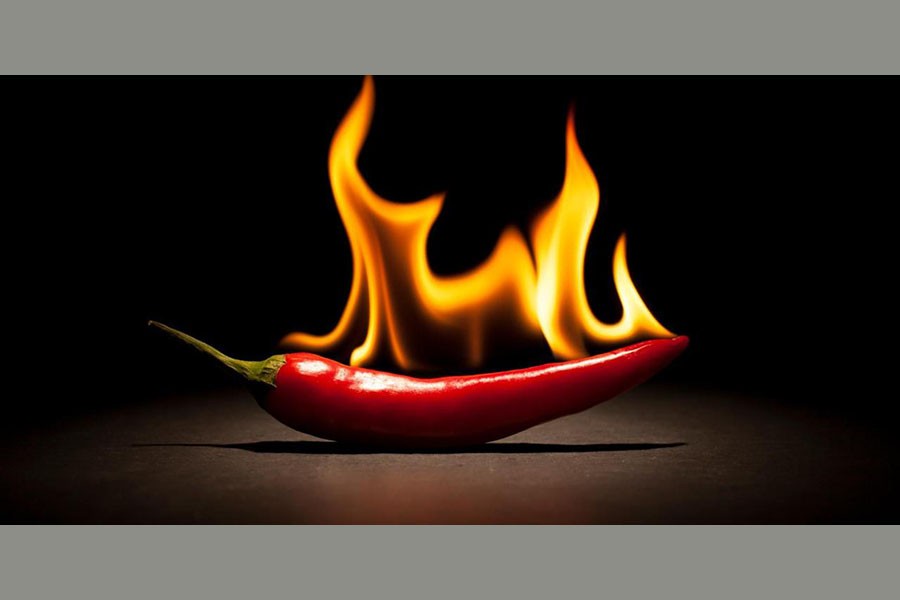
Published :
Updated :

When 'hot' or 'strong' is used to qualify the taste of a chilli, it proves to be a very poor soubriquet for the burning sensation the spicy pod gives in the mouth. But then the taste buds of most people in Asia and large swathes of other continents crave for at least a moderate degree of the same sensation. In the culinary art of the East, chilli occupies a highly important place. The taste is both forbidding and appealing at the same time --forbidding because if the hottest varieties are used a little more than usual, eating a dish may be a most painful experience. One has to look for various prescribed methods -from dumping a tea spoonful of sugar to gulping a great quantity of lemon juice or a lump of tamarind to sour fruit pickles -in order to soothe the mouth.
All varieties of green chillies are at their hottest now -hotter than Carolina Reaper which holds the current Guinness world title for Scoville Heat Unit (SHU), a measure of spiciness, in Bangladesh. Has anyone ever imagined that the price of this common spice can cross the Tk 200 a kilogram mark? Last week its going rate was Tk 280 a kg and if things allowed to continue like this, it is likely to cross the Tk 300 mark. The intensity of the burning sensation in the mouth appears to be no match for the heat generated by the price in the kitchen market.
And it is not green chilli that is so scalding for consumers, almost all varieties of vegetables have now registered price escalation far beyond rational limits. How much can be the price of a kilogram of okra, also called lady's fingers or jumbo? Maybe, perhaps Tk 100-120, at the best! No, you are wrong. It was sold at the rate of Tk 160 a kg on last Friday at the Krishi Market Kancha Bazar. Potol in English called pointed gourd was also sold at the same price. A kilogram of brinjal was priced at Tk 120.
When vegetables have become so dear, the hottest spice in the market has to demonstrate its elevated position. So, what used to be sold at Tk 80 or Tk 120 a few weeks ago, now sits at the top of the price chart. It has rightly claimed its throne in order to maintain market discipline (read anarchy instead). For, market experts find no valid reason for the astronomical rise in prices of the main ingredients of Bangalee cuisines.
A large section of traders at all levels derive a sadistic pleasure fleecing compatriot consumers. In cross border business the same traders at times smuggle out commodities in order to create crises of those particular items. At times they would do so by disposing of excess amount across the border at prices lower than the domestic ones.
True, floods have had an adverse impact on the supply of vegetables. But this does not mean that those items are awfully short in the market. Actually traders make it appear so. In fact, dishonest traders have long held the nation hostage to their arbitrary designs. They target a commodity at different times and reap atrocious profit from the market for a period. This time rice was successfully targeted for the purpose. So, like chilli all other essentials are now bleeding the consumers white.


 For all latest news, follow The Financial Express Google News channel.
For all latest news, follow The Financial Express Google News channel.